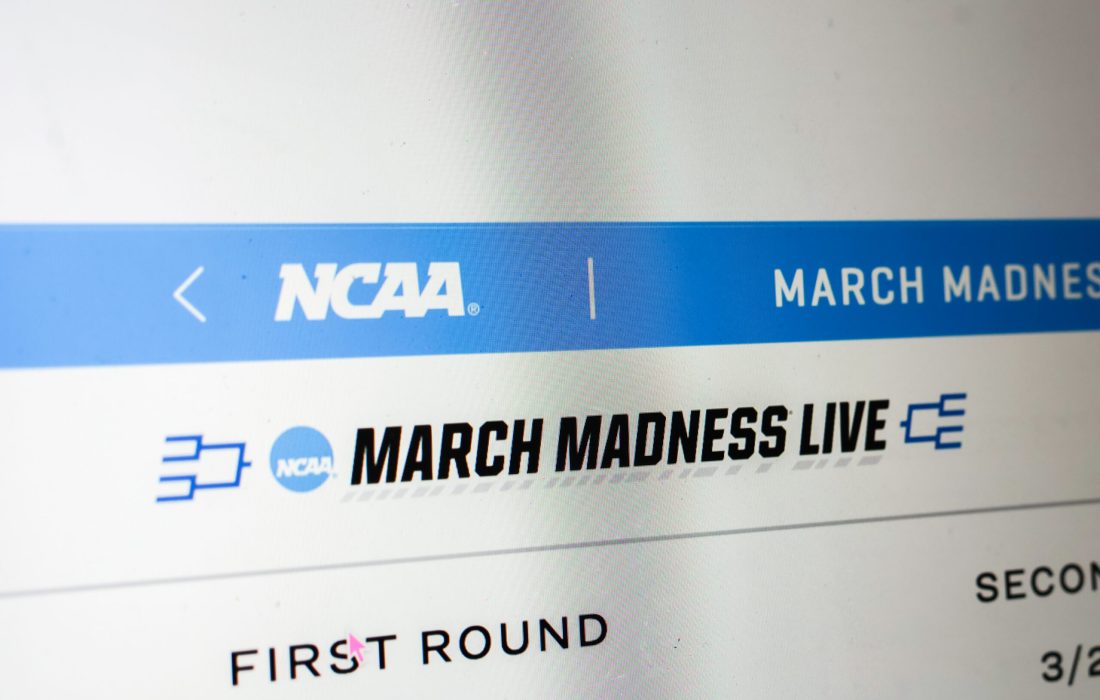Deputy Opinion Editor Michael Clausen explores the corporate capture of men’s college basketball.
March Madness’ Missing Mid-Majors
There’s something wrong with the NCAA Tournament. Now that we’ve got the lineup for this year’s Final Four, it’s clear the college basketball season will end with a face-off between the four highest seeded teams for the first time since 2008, and the second time in NCAA Tournament history.
While the NCAA Tournament is known as “March Madness,” this year’s tournament has been tamer than ever, with any hope for “Cinderella runs” — when low-seeded teams far overperform team expectations — quashed early on in the tournament.
Across-the-board wins from college basketball’s best teams, although technically the smart bet, was once a rarity in the tournament. But recent years have seen dominance from the best teams and conferences.
As players and conferences have sought out corporate cash and consolidated TV contracts, college sports have flattened, with big conferences, big deals and big names crowding out the mayhem that puts the madness into March.
The lack of upsets has long been a problem for women’s college hoops, where the smaller number of competitive programs, lack of university funding and shorter legacy of NCAA Division I play regularly results in huge blowouts, according to USA Today.
Only a handful of teams have historically run the table in the women’s tournament, with just two teams — the University of South Carolina and the University of Connecticut — claiming nine of the last 15 national titles. UConn alone has won 11 — a full quarter of women’s championships — and the tournament has far fewer upset challengers or surprise wins.
On the men’s side of Division I, though, things could hardly be more different. In the NCAA Men’s Basketball Tournament’s 86 years of history, the tournament is famous for its chaotic odds and the energy of knowing anyone could win — even 2018’s 11-seed Loyola.
But big money has changed the game. Despite the legacy of even competition, the league’s biggest conferences, known as the Power Five, are now dominating the competition. The Southeastern Conference alone sent a quarter of the conference’s field, with 14 out of 16 of its teams in the 68-team competition.
Beginning in 2021, the NCAA has undergone a period of intense conference consolidation. Loyola joined the Atlantic 10 in 2022, leaving their longtime home in the Missouri Valley Conference. The biggest shifts, though, came in the biggest and richest conferences, not the middle tiers where Loyola and the A10 sit — known as the mid-majors.
One of basketball’s oldest and most prestigious conferences, the Pacific-12, all but disintegrated in 2023, according to Axios. While the conference had dominated West Coast basketball for decades, after being picked apart in a bidding war between fellow Power Five blocs the Big-10 and Big-12, the league was left with just two teams.
With the Pac-12 shredded, both the Big-10 and Big-12 — formerly Midwest-based conferences — now stretch across the entire continental U.S., representing 16 and 18 universities, respectively. Both saw their TV deals skyrocket in value to $845.6 million and $480.6 million, according to CBS Sports.
CBS Sports estimated each conference’s rough per-school payout, which varies by school, at approximately $58.8 million and $44.9 million, respectively. The A10’s TV deal, for reference, is only worth $500,000 per school under the A10’s most recent media agreement, according to an estimate from Collegiate Sports Nation.
Despite strong all-season play from the mid-majors, Power Five teams received the wide majority of the tournament slots, making up 33 of the 37 at-large bids in the first round, according to Sports Illustrated.
One of the Atlantic Coast Conference’s three at-large teams, the University of North Carolina, was selected for the tournament over teams with arguably better records — but worse conferences — allegedly in part because the selection committee was chaired by the university’s athletic director.
Ever-larger Name, Image and Likeness payment deals for the best players have also led to record-breaking transfer rates, with 700 players entering the transfer portal on the first day alone, smashing last year’s record of 300. Student-athletes are now understandably incentivized to hop between programs looking for the best payout, according to ESPN.
With TV deals, player payments and basketball’s tough breaks, the era of profit-dominated NCAA basketball is pricing basketball’s mid-majors out of the market, according to SBNation. While it might be better for the big guys, losing mid-majors in pursuit of big bucks is hurting the sport and fans alike, with Elite Eight viewership falling by 10%, according to Sports Media Watch.
On the other hand, the National Invitational Tournament is still full of mid-majors and compelling drama — like Loyola’s narrow April 1 loss in the semifinals. But the mid-major “magic” missing from basketball’s biggest stage is being felt throughout the corporatized NCAA Tournament’s lackluster viewing experience.
It’s hard to say what the future of NCAA basketball holds, but we can only hope it finds a balance between basketball and dollar bills.
-

Michael Clausen is the Deputy Opinion Editor for the Loyola Phoenix. He is a fourth-year student majoring in political science and history, with minors in Spanish and peace studies. Originally from Kansas, when he’s not writing for the paper, editing stories or clicking through slides, you can usually find him watching the Royals, the Chiefs, or Sporting Kansas City. He enjoys summer days, sitting on the beach and writing about politics.
View all posts
Topics
Get the Loyola Phoenix newsletter straight to your inbox!


